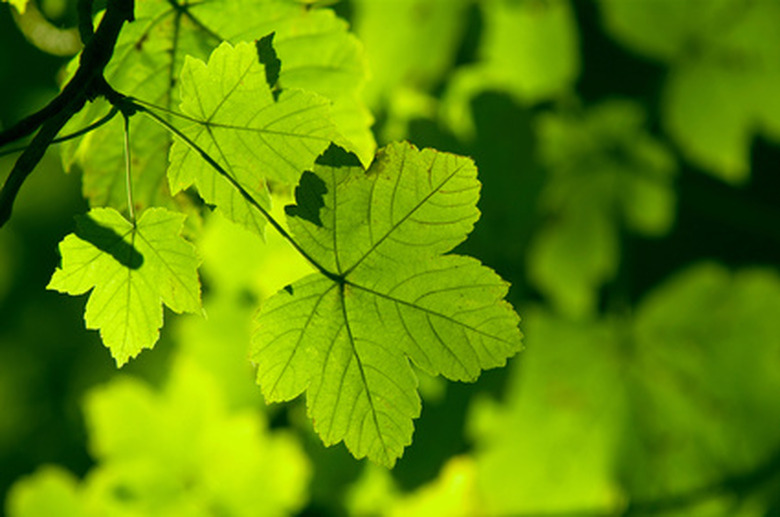Fruitless Mulberry Tree Diseases
Fruitless mulberry trees are fast-growing and fairly large, providing dense shade and thick, lateral branches for climbing. But they are fairly disease-prone and also tend to have shallow roots, which can make them difficult to maintain. The best way to keep your fruitless mulberry happy and healthy in your yard is to know the signs and symptoms of diseases so you will be able to spot trouble and avert serious disaster before it strikes.
Mulberry Leaf Spot
Mulberry leaf spot is a fungal infection that attacks the leaves of the fruitless mulberry. The leaves first will develop black spots. Left unchecked, mulberry leaf spot will cause malformed leaves to grow, then yellow quickly and fall. Use sterile pruning to remove all affected leaves and small branches. Dispose of debris in a garbage bag or by burning so no infected leaves or branches are lying on the ground near the tree to cause a second infection. If your pruning does not get the disease under control, you can use a fungicide to eradicate the problem. In most cases, mulberry leaf spot will not kill your fruitless mulberry, but it can weaken it and allow secondary infections access to the plant. It's also a cosmetic problem.
- Fruitless mulberry trees are fast-growing and fairly large, providing dense shade and thick, lateral branches for climbing.
- Left unchecked, mulberry leaf spot will cause malformed leaves to grow, then yellow quickly and fall.
Armillaria Root Rot
Armillaria root rot is also called oak root fungus, but it also attacks mulberry varieties, including the fruitless mulberry. The first sign of this rot will be that the tree develops stunted, discolored leaves that quickly fall instead of a healthy canopy. You may also notice mushrooms sprouting at the base of the tree, and branches may start dying. Once a fruitless mulberry develops root rot, you must remove the tree completely before the fungus spreads to other plants. This infection cannot be cured. The best way to prevent armillaria root rot is to make sure that the soil is well-drained and that there are no roots from previous plants in the ground when you plant your fruitless mulberry.
Nectria Canker
Fruitless mulberries are prone to developing cankers if the tree has any type of surface wound. The cankers start out as sunken areas on the branches or trunk. At this point, they are fairly hard to distinguish from the healthy part of the tree. But after a time, the canker will start to swell and become dark and corky. This can cause the leaves on branches that are infected to turn brown or wilt. To resolve the issue, you must remove the canker. The best time to do this is when the weather is cool because the bacteria that cause the canker are less likely to reinfect when they are cold. If the canker has girdled or killed a branch, remove the entire branch 4 or 5 inches below the canker. Dispose of debris in garbage bags or by burning rather than leaving it on the ground.
- Armillaria root rot is also called oak root fungus, but it also attacks mulberry varieties, including the fruitless mulberry.
- Once a fruitless mulberry develops root rot, you must remove the tree completely before the fungus spreads to other plants.
